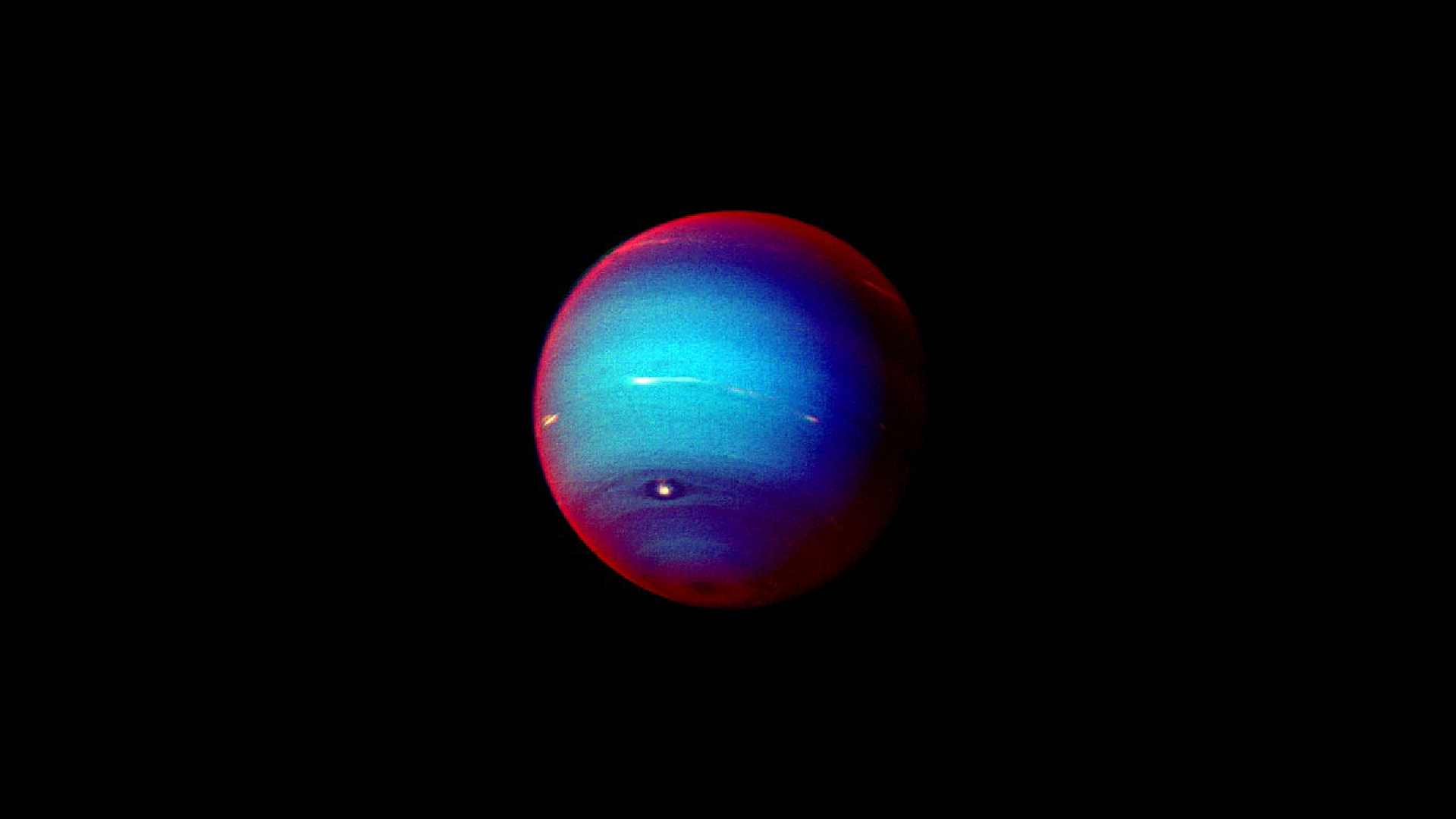Space photo of the week: 1st-ever close-up of Neptune is Voyager 2's final portrait of a planet
Voyager 2, NASA's longest-running mission, explored Neptune during a historic encounter on Aug. 25, 1989, sending back humanity's first close-ups of the planet.

What it is: One of the final photographs of Neptune taken by NASA's Voyager 2 probe
Where it is: 2.8 billion miles (4.5 billion kilometers) from the sun
When it was taken: Aug. 25, 1989
When it was shared: Aug. 19, 2024
Why it's so special: Only one spacecraft has ever visited the eighth and most distant planet from the sun.
On Aug. 25, 1989, NASA's Voyager 2 spacecraft took the first-ever close-up images of Neptune. This one — among the last full-disk photos taken before the probe ended its "Grand Tour" of the planets — became one of the most iconic. It revealed Neptune as a deep azure blue, which colored the public's perception of the planet for decades. (That is, until a new treatment of Voyager 2's images earlier this year revealed Neptune's true color to be a much lighter blue green.)
Voyager 2's original images were taken in false color using filters — a standard technique used by planetary astronomers. In this case, blue and green filters were used alongside one that passes light at a wavelength absorbed by methane gas. According to scientists, hydrogen and helium dominate Neptune's atmosphere, but methane gives it its blue appearance by absorbing red light. The filters make methane look dark blue in this image, but they also reveal a semitransparent haze layer across the planet. The bright-red edge around Neptune is caused by the haze scattering sunlight at higher altitudes, above most of the methane.
Get the world’s most fascinating discoveries delivered straight to your inbox.
Related: Uranus and Neptune aren't made of what we thought, new study hints
Voyager 2 took this shot almost precisely 12 years after it launched on a Titan-Centaur rocket from Cape Canaveral, Florida. Having visited Jupiter in 1979, Saturn in 1981 and Uranus in 1985, Voyager's closest approach to Neptune came on Aug. 25, 1989. During the flyby, Voyager also visited two of Neptune's moons, Triton and Nereid, and discovered six new moons and four rings.
Because Neptune is about 30 times farther from the sun than Earth is, it gets only a faction of a percent of Earth's sunlight, meaning Voyager 2 had to take long-exposure images. So engineers fired the fast-moving spacecraft's thrusters to have it rotate so the camera could remain focused.
Voyager 2's images from Neptune were its last, sent back as radio signals with 13-watt transmitters — about enough power to run a refrigerator light bulb, according to NASA — and took four hours to travel across the solar system to NASA's Deep Space Network of radio antennae across the world.
Neptune was Voyager 2's last stop before it traveled to the solar system's edge. The probe entered interstellar space on Nov. 5, 2018. Voyager 2 remains NASA's longest-running mission, even after encountering some communication problems last summer.
For more groovy space photos, check out our space photo of the week archives. New stories post every Sunday.

Jamie Carter is a freelance journalist and regular Live Science contributor based in Cardiff, U.K. He is the author of A Stargazing Program For Beginners and lectures on astronomy and the natural world. Jamie regularly writes for Space.com, TechRadar.com, Forbes Science, BBC Wildlife magazine and Scientific American, and many others. He edits WhenIsTheNextEclipse.com.


